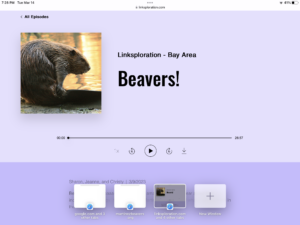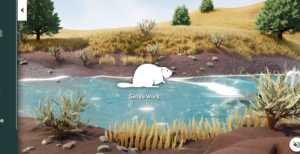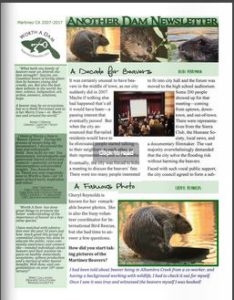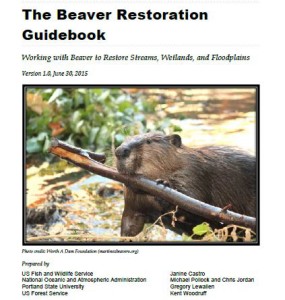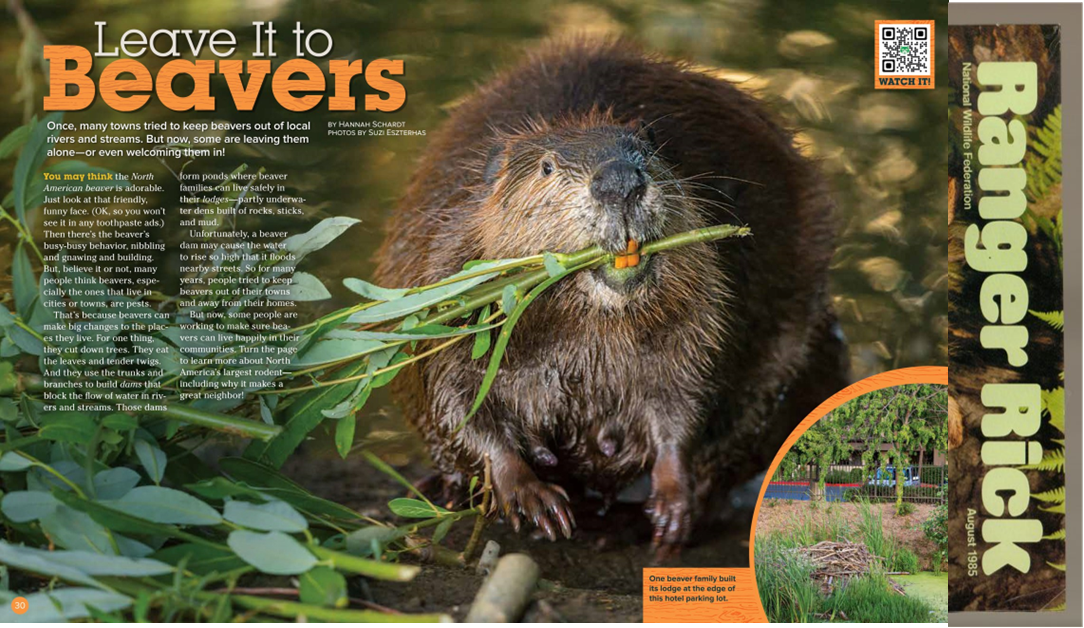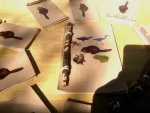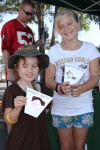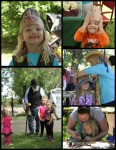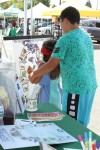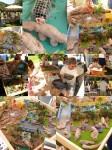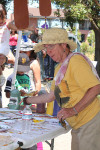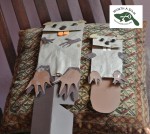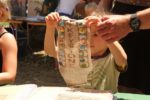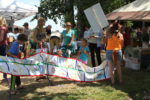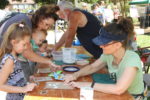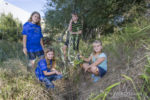I feel it’s time to read another article that’s really about our beavers without realizing it. Maybe this time from Yale. Are you ready?

Habitat on the Edges: Making Room for Wildlife in an Urbanized World
Efforts to protect biodiversity are now focusing less on preserving pristine areas and more on finding room for wildlife on the margins of human development. As urban areas keep expanding, it is increasingly the only way to allow species to survive.
 For conservationists, protecting biodiversity has in recent years become much less about securing new protected areas in pristine habitat and more about making room for wildlife on the margins of our own urbanized existence. Conservation now often means modifying human landscapes to do double-duty as wildlife habitat — or, more accurately, to continue functioning for wildlife even as humans colonize them for their homes, highways, and farms. There is simply no place else for animals to live.
For conservationists, protecting biodiversity has in recent years become much less about securing new protected areas in pristine habitat and more about making room for wildlife on the margins of our own urbanized existence. Conservation now often means modifying human landscapes to do double-duty as wildlife habitat — or, more accurately, to continue functioning for wildlife even as humans colonize them for their homes, highways, and farms. There is simply no place else for animals to live.
 Corridor protection on the grand scale has achieved remarkable results, notably with the 2,000-mile long Yellowstone-to-Yukon Conservation Initiative. It aims to connect protected areas and to ensure safe passage for elk, grizzly bears, and other wildlife across 500,000 square miles of largely shared habitat, both public and privately owned. At the same time, research by Nick Haddad, a conservation biologist at the University of Michigan’s W.K. Kellogg Biological Station, has demonstrated substantial improvements in biodiversity from corridors as little as 25 yards in width, well within the range, he says, of “what’s reasonable in urban landscapes.” Indeed, a new study from northern Botswana has found that elephants traveling from Chobe National Park to the nearby Chobe River will use corridors as small as 10 feet wide to traverse newly urbanized areas.
Corridor protection on the grand scale has achieved remarkable results, notably with the 2,000-mile long Yellowstone-to-Yukon Conservation Initiative. It aims to connect protected areas and to ensure safe passage for elk, grizzly bears, and other wildlife across 500,000 square miles of largely shared habitat, both public and privately owned. At the same time, research by Nick Haddad, a conservation biologist at the University of Michigan’s W.K. Kellogg Biological Station, has demonstrated substantial improvements in biodiversity from corridors as little as 25 yards in width, well within the range, he says, of “what’s reasonable in urban landscapes.” Indeed, a new study from northern Botswana has found that elephants traveling from Chobe National Park to the nearby Chobe River will use corridors as small as 10 feet wide to traverse newly urbanized areas.

Even in the absence of new parks and other habitat, city residents have rallied to their wildlife, sometimes in extraordinary fashion. In Mumbai, development-oriented politicians continue to encourage the destruction of natural habitat, particularly in the Aarey Milk Colony neighborhood abutting the city’s Sanjay Gandhi National Park. But local conservationists, together with the park itself, have launched a pioneering campaign to help densely populated neighborhoods around the park cope with more than 30 free-ranging leopards in their midst. Likewise, Los Angeles has turned its mountain lions into urban folk heroes. (The Facebook bio of the lion known as P22 begins: “Hi! I’m LA’s loneliest bachelor. I like to hang out under the Hollywood sign to try and pick up cougars. Likes: Deer, catnip, Los Feliz weekends. Dislikes: Traffic, coyotes, P-45.”)
 But caution about the potential of our cities and suburbs as wildlife habitat is probably still a good idea. One danger is that these landscapes may become “ecological sinks” — that is, places where excess individuals from undisturbed habitat can survive, but not ultimately increase. Having straw-headed bulbuls in central Singapore does not, for instance, ensure survival of the species. Success with some more visible species may also blind us to broader but less obvious declines in other species. European rewilding, for instance, has not been rewilding for its insect population.
But caution about the potential of our cities and suburbs as wildlife habitat is probably still a good idea. One danger is that these landscapes may become “ecological sinks” — that is, places where excess individuals from undisturbed habitat can survive, but not ultimately increase. Having straw-headed bulbuls in central Singapore does not, for instance, ensure survival of the species. Success with some more visible species may also blind us to broader but less obvious declines in other species. European rewilding, for instance, has not been rewilding for its insect population.
Hmm, isn’t that a GREAT article about our beavers that never mentions them once? I told you so. Again, I’m no scientist but if I was looking for one single species to tolerate on the urban landscape that gave the most bang for your buck – you know, biodiversity, focal species, social cohesion – I’d pick beaver. Their little urban dams would take that urban corridor you call a creek and elevate it to the next level with birds, fish and otters. Doesn’t that seem like a great investment for any city to make?
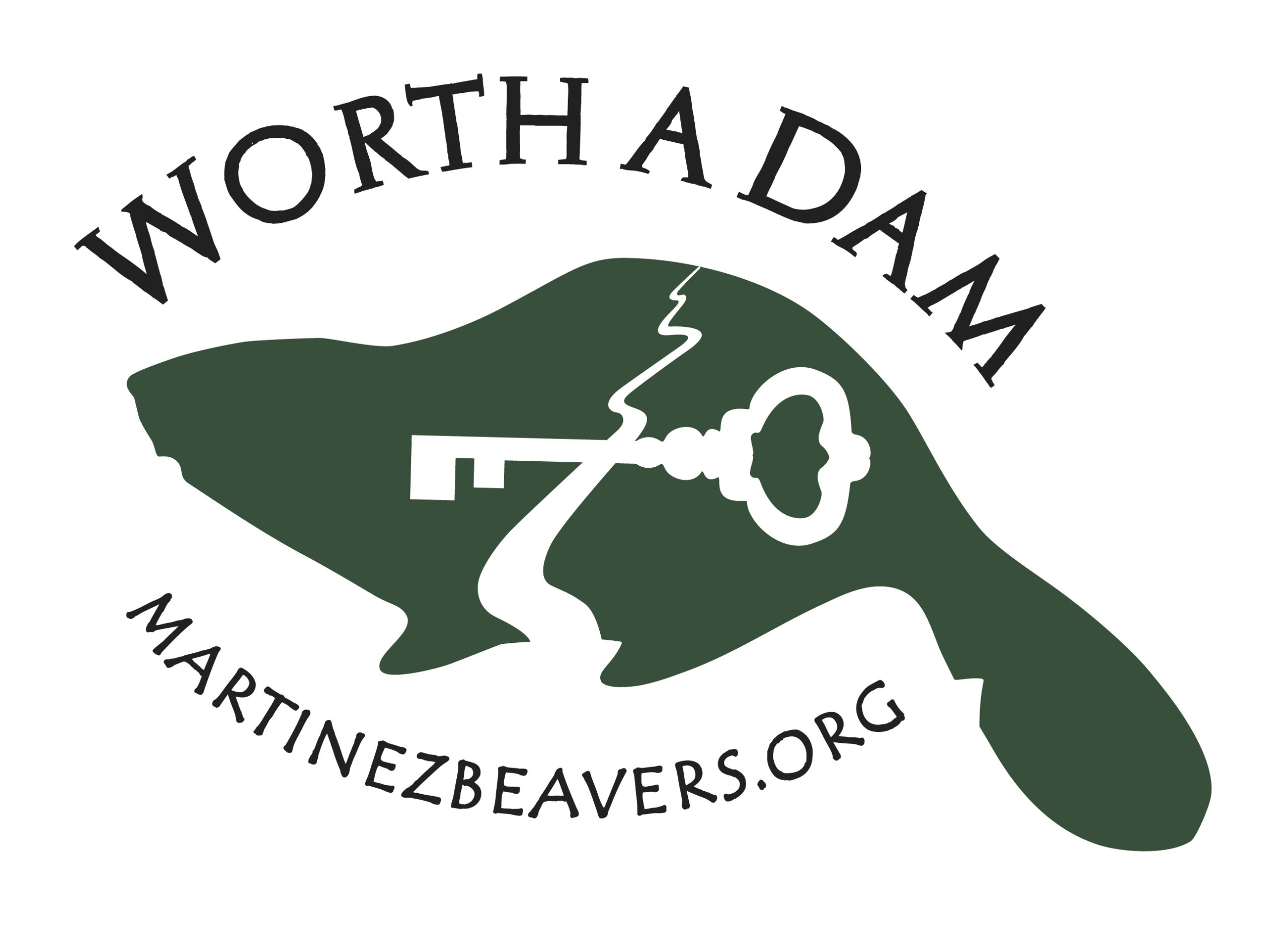

 year we bought our house there was such a strange winter that the temperature dropped overnight rapidly and the plaza fountain froze in action. It was beautiful and odd to see but we had no idea how rare it was and we didn’t even own a camera at the time. It was an isolated, unique, unthreatening moment in time that welcomed us to the neighborhood. I thought of that morning when I watched the
year we bought our house there was such a strange winter that the temperature dropped overnight rapidly and the plaza fountain froze in action. It was beautiful and odd to see but we had no idea how rare it was and we didn’t even own a camera at the time. It was an isolated, unique, unthreatening moment in time that welcomed us to the neighborhood. I thought of that morning when I watched the 
 I came across this little photo of the ‘dancing beaver’ by accident and had to celebrate new years’ with her. The photo has no explanation, but looking at it I think that someone just took away the branch she was eating and she’s looking after it mournfully and reaching with her paws to get it back.
I came across this little photo of the ‘dancing beaver’ by accident and had to celebrate new years’ with her. The photo has no explanation, but looking at it I think that someone just took away the branch she was eating and she’s looking after it mournfully and reaching with her paws to get it back.

 Beavers are the largest native rodents found in North America. Adults average 35 pounds with some individuals reaching as much as 65 pounds. Specimens of 90 pounds have also been recorded. Aside from the impressive dams that beavers construct to contain water that they require to survive, the lodges of beavers are unique and elaborate in design, too. The inside chamber may be as wide as eight feet and as high as three feet and is lined with soft vegetative materials like grass and woodchips. Depending also on the structure’s design, the entrances may differ as well. Some are straight up and through the floor of the lodge, whereas other lodges are entered through gradually sloped entrance holes.
Beavers are the largest native rodents found in North America. Adults average 35 pounds with some individuals reaching as much as 65 pounds. Specimens of 90 pounds have also been recorded. Aside from the impressive dams that beavers construct to contain water that they require to survive, the lodges of beavers are unique and elaborate in design, too. The inside chamber may be as wide as eight feet and as high as three feet and is lined with soft vegetative materials like grass and woodchips. Depending also on the structure’s design, the entrances may differ as well. Some are straight up and through the floor of the lodge, whereas other lodges are entered through gradually sloped entrance holes. hough sometimes viewed as pests because of the problems they can create for people, property, and roadways as a result of damming activities that back up water and cause flooding, beaver ponds also provide many benefits for other species of wildlife. Flooded trees often die and subsequently become excellent nesting trees for wood ducks and other cavity-using wildlife. River otter, mink, turtles, frogs, toads, salamanders, aquatic invertebrates, fish, and many species of birds such as belted kingfishers, great blue herons, and scores of songbirds, shorebirds, and waterfowl use beaver ponds and the associated habitats. In time, because of sedimentation, diminishing timber, or hydrologic changes, beavers eventually abandon their ponds. These old ponds often become lush meadows.
hough sometimes viewed as pests because of the problems they can create for people, property, and roadways as a result of damming activities that back up water and cause flooding, beaver ponds also provide many benefits for other species of wildlife. Flooded trees often die and subsequently become excellent nesting trees for wood ducks and other cavity-using wildlife. River otter, mink, turtles, frogs, toads, salamanders, aquatic invertebrates, fish, and many species of birds such as belted kingfishers, great blue herons, and scores of songbirds, shorebirds, and waterfowl use beaver ponds and the associated habitats. In time, because of sedimentation, diminishing timber, or hydrologic changes, beavers eventually abandon their ponds. These old ponds often become lush meadows. Many folks believed wood ducks could never recover, but they were wrong.
Many folks believed wood ducks could never recover, but they were wrong.





